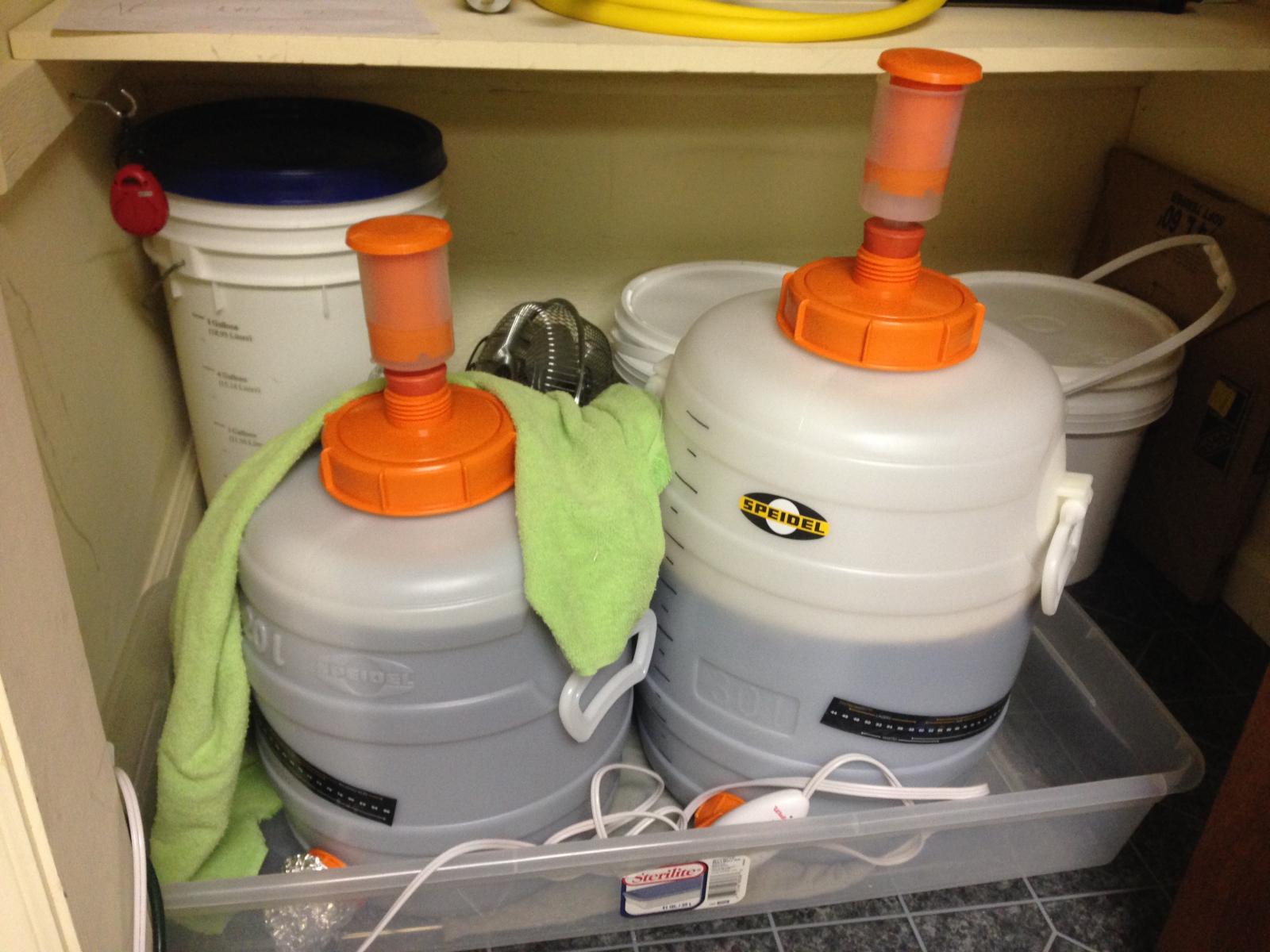5. Return wort to boil. The mixture is now called “wort”,
the brewer’s term for unfermented beer.
-- Add 1 oz Summit hops and boil for 60 minutes.
-- Add 1 oz Chinook hops and 6 lbs dark malt syrup 15 minutes before the end of the boil.
-- Add 1 oz Centennial hops 10 minutes before the end of the boil.
-- Add 1 oz Cascade hops 5 minutes before the end of the boil.
-- Add 1 oz Centennial hops and 1 lb corn sugar at the end of the boil.
I would wait with adding the last 6 pound of LME until after you're done boiling:
5 minutes before the end of the boil, and just
before adding the 5 minute Cascade hops, first ladle some (~1-2 quarts) of your wort into a separate (largish) pot (we'll get back to that in a minute). Then add your 5 minute Cascade hops to the main kettle per instructions and stir.
Now go back to that pot with 1-2 quarts of hot wort. But keep an eye on the clock (set timer!) to turn the flame off on your boiling kettle at "0" minutes and add your 0-minute Centennial hops. Don't forget those!
In the mean time, in that pot, dilute the 6 pound of malt syrup in that hot wort so it gets thinner. Once dissolved you may heat it up a bit, but if you do so do it
slowly and carefully. You may heat it to around 180°F, no higher, no need to boil. Again, if you're heating it, be very, very careful NOT to scorch it! In case you need to step away to tend to your main kettle, remove the pot from the heat source.
The main kettle should be done by now. Pour the whole pot of diluted extract back into kettle, and stir well to homogenize the wort. After adding, the wort should be at least 165°F. 180°F is best, a bit higher is fine too.
Let that sit with a lid on it for about 15 minutes, stirring every few minutes. That's called a "hopstand." You could extend that to 30 minutes (or even longer) if you want. All that time more flavor is being extracted from your late addition hops. That's how IPAs are made!
On the last step, when adding your 0-minute Centennial hops:
As I mentioned before, you're still going to wait and add that pound of corn sugar (dissolved, boiled and chilled) directly to the fermentor after 5-7 days, right?



















































![Craft A Brew - Safale S-04 Dry Yeast - Fermentis - English Ale Dry Yeast - For English and American Ales and Hard Apple Ciders - Ingredients for Home Brewing - Beer Making Supplies - [1 Pack]](https://m.media-amazon.com/images/I/41fVGNh6JfL._SL500_.jpg)







